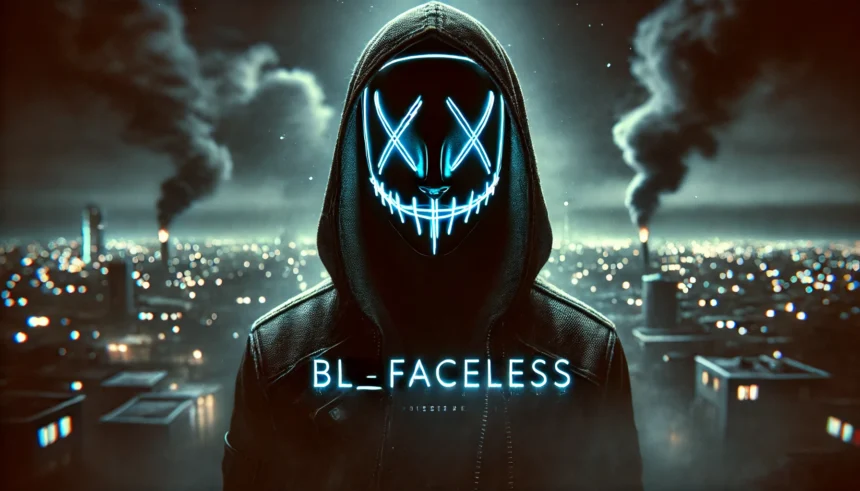In today’s digital world, anonymity has become an important part of creative expression. “BL_Faceless” is a term that has emerged in various contexts, particularly in digital art, storytelling, and the Boys’ Love (BL) genre. It refers to the idea of faceless characters, anonymous creators, and a unique way of telling stories that focus more on emotions and relationships rather than individual identities.
The faceless concept has been embraced by artists, writers, and social media users who wish to focus on content rather than personal details. But why has this idea gained popularity? What does it symbolize? And how does it impact storytelling, social media, and even online identity? Let’s explore BL_Faceless in detail.
Origins and Development of BL_Faceless
Early Adoption in the Digital Age
The idea of faceless content has been present for a long time, but it became more prominent in the digital age. Many artists and creators started using faceless characters to allow audiences to engage more with the emotions and actions of the story rather than the specific looks of a character.
The term “BL_Faceless” gained traction particularly in the BL (Boys’ Love) genre, where stories focus on romantic relationships between male characters. In some cases, faceless characters are used to create a universal experience for the audience, allowing them to project their own ideas and emotions onto the characters.
Shift in Visual Culture
Visual storytelling has evolved, and faceless characters now serve as a form of artistic and narrative expression. This method can be found in:
- Minimalist artwork, where characters have no faces to emphasize their actions or emotions.
- Interactive storytelling, where readers or viewers feel more connected because they can imagine themselves in the story.
- Digital spaces where anonymity allows people to share content without exposing personal identities.
By removing a character’s face, creators can focus more on the story itself, making emotions, relationships, and interactions the central focus.
The Role of Facelessness in BL Content
Focus on Relationships Over Identity
In BL content, faceless characters allow audiences to concentrate on the deep emotional bonds between protagonists instead of being influenced by physical traits. When a character lacks a face, the story relies on body language, gestures, and emotions expressed through words rather than detailed facial features.
Symbolism of Identity and Anonymity
Faceless characters can symbolize different things:
- Anonymity – A way to represent someone without defining them completely.
- Emotional Vulnerability – Without a face, emotions are sometimes even stronger, as they are expressed in other ways.
- A Universal Character – A faceless figure allows the audience to connect on a personal level, imagining themselves in the character’s place.
This storytelling method is effective in BL narratives where emotions and relationships are at the heart of the story.
Facelessness in the Boys’ Love (BL) Genre
Anonymity as a Narrative Tool
In BL stories, the faceless concept serves multiple purposes:
- Some stories feature faceless characters to maintain a sense of mystery.
- Others use this approach to highlight emotional tension without relying on physical features.
- Facelessness can also be a creative technique to make characters more relatable to a broader audience.
Visual Style and Fan Reception
The faceless approach is used in BL webtoons, fan art, and even animated series. Many fans appreciate this artistic choice because:
- It allows them to imagine the characters in their own way.
- It avoids stereotypical depictions of masculinity or femininity.
- It creates a more immersive emotional experience.
In this way, faceless characters have become a recognizable and valued element of BL storytelling.
The Impact of BL_Faceless on Social Media
Anonymity in Online Communities
With the rise of social media, many content creators prefer to remain anonymous. This can be for privacy reasons, personal security, or simply to let their work speak for itself. BL_Faceless has influenced:
- Fan artists and writers who create BL content without revealing their real identities.
- Storytelling communities where faceless characters are common.
- Digital influencers who use faceless branding as part of their creative identity.
The Rise of Faceless Influencers
Many social media personalities, particularly those in the gaming, art, and storytelling industries, have embraced faceless branding. This allows them to focus on content creation without the pressure of maintaining a public persona.
Examples include:
- Anonymous illustrators sharing faceless BL artwork.
- Writers using faceless avatars to represent their work.
- Video creators producing BL content without revealing their identities.
This trend is growing, making anonymity a powerful tool for content creators.
Psychological and Emotional Appeal of BL_Faceless
Emotional Engagement
Faceless characters often evoke strong emotional responses. Since audiences cannot rely on facial expressions, they focus more on:
- The tone of the dialogue.
- Subtle body movements.
- The atmosphere of the story.
This can make a story even more emotionally impactful.
Universal Appeal
Another reason for the popularity of faceless storytelling is its ability to create a sense of inclusivity. A character without a face can be anyone, making it easier for different people to relate to them. This concept is particularly powerful in BL, where diverse audiences appreciate stories that focus on love and emotion rather than physical appearance.
Ethical and Cultural Implications
Freedom of Expression
Faceless storytelling allows creators to share ideas without fear of judgment. This is especially important in genres like BL, where some content may be sensitive or controversial in certain cultures.
Cultural Sensitivity
In some regions, BL content faces restrictions. Faceless storytelling provides a way for creators to explore love and relationships without explicitly depicting characters in ways that might be censored.
Privacy and Protection
For many digital creators, remaining faceless is a way to protect their personal lives while still engaging with their audience. This is particularly useful for those working in spaces where anonymity is valued.
Future of BL_Faceless and Anonymous Content Creation
Technological Influence
With advancements in digital tools, the faceless concept is likely to evolve. Possible future developments include:
- AI-generated faceless characters that can interact with audiences.
- Virtual reality (VR) experiences where users can project themselves into faceless characters.
- More interactive storytelling formats where the audience plays a role in shaping the story.
Growing Popularity
As the digital world continues to embrace anonymity, the faceless approach will likely become more mainstream. Whether in BL storytelling, art, or social media, faceless characters and creators will continue to shape the way we experience digital content.
Conclusion
The concept of BL_Faceless is more than just an artistic choice—it represents a shift in how stories are told and experienced. By removing facial features, creators emphasize emotions, relationships, and personal interpretation. In the Boys’ Love genre, this approach allows audiences to connect deeply with the characters and their stories.
Beyond storytelling, faceless branding is also shaping online communities, providing a space where creators can express themselves freely while maintaining their privacy. As digital media evolves, BL_Faceless will continue to grow in influence, proving that sometimes, what we don’t see is just as powerful as what we do.
FAQs
Why are faceless characters used in BL stories?
Faceless characters shift focus to emotions and relationships, allowing audiences to project their own interpretations onto the story.
Does BL_Faceless mean the character has no identity?
No, facelessness is a stylistic choice that emphasizes emotional depth rather than physical appearance.
How does faceless storytelling affect audience engagement?
It enhances immersion by making characters feel more relatable and universal to different viewers.
Is BL_Faceless only used in digital art and webtoons?
No, it is also found in fan fiction, animation, social media avatars, and even anonymous content creation.
Why do some content creators remain faceless online?
Many choose anonymity for privacy, security, or to let their work take center stage without personal bias.







